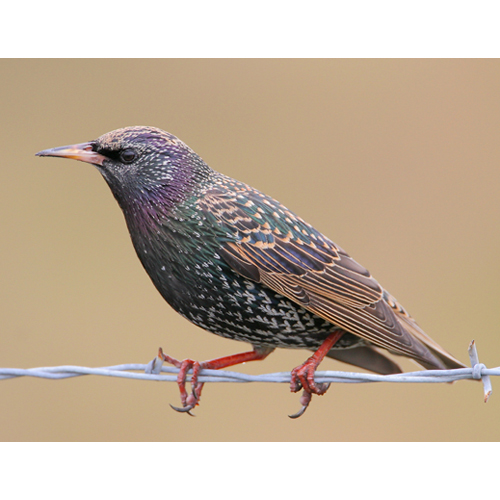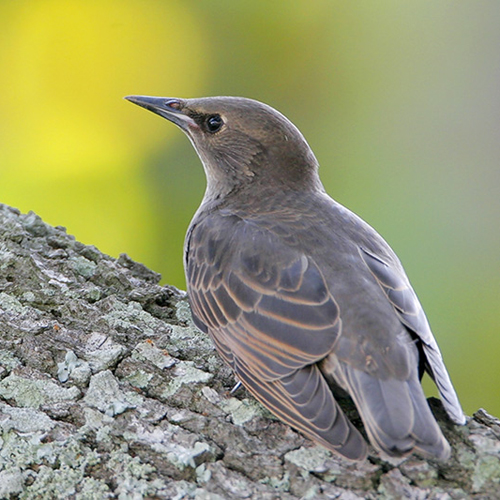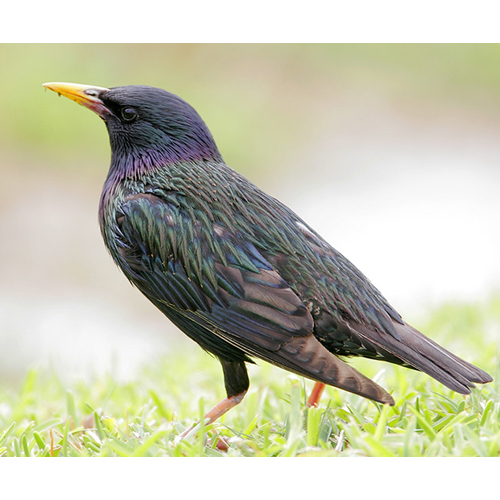European Starlings are Very Abundant year round.
Habitat
Starlings are typically associated with disturbed areas and human-altered settings. They can be found in practically all habitats, with the exception of large tracts of undisturbed forests and undeveloped alpine areas. They usually forage in open areas, especially lawns, agricultural fields, or other developed areas, but require nearby nesting cavities.
Behavior
European Starlings tend to form flocks year round, but flocks are generally larger'and often huge'in fall and winter. They often forage with other species, including Red-winged Blackbirds, Brown-headed Cowbirds, American Robins, House Sparrows, crows, and Rock Doves. When foraging, they generally walk or run along the ground and probe the soil with their bills, looking for food. Starlings can be aggressive and will persistently harass other species to take over nesting cavities. They will also mob predators in flight, gathering into tight flocks and dive-bombing a hawk or other predator. Starlings are intelligent and adaptable, and are capable mimics.
 |
| Non breeding Male |
 |
| Juvenile |
 |
| Breeding Male |



No comments:
Post a Comment